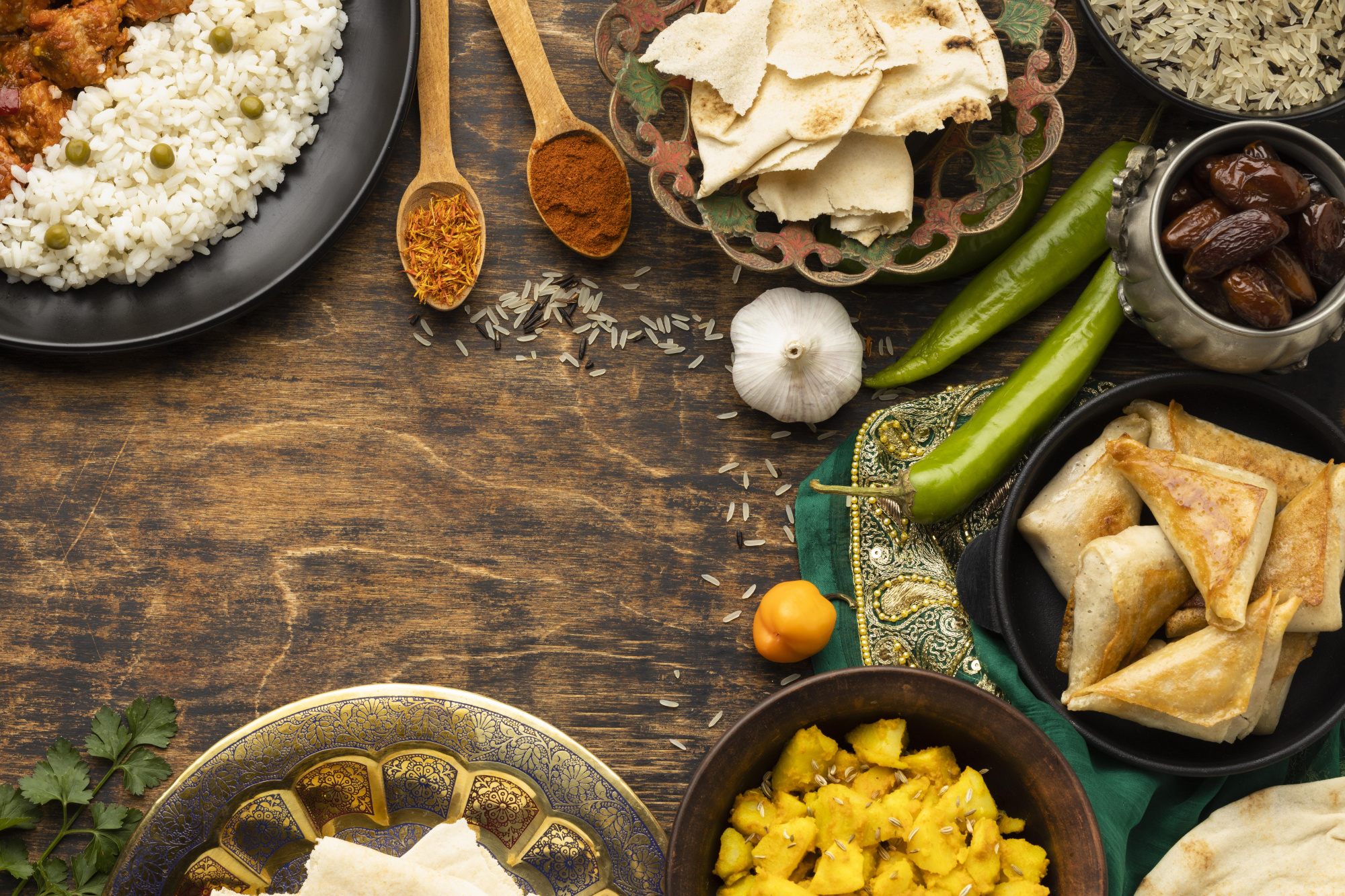Secrets of Indian Cuisine
Contents
- Indian specialties
- Exotic Indian Food
India is one of the most original and mysterious countries in the world. She is considered the progenitor of all civilizations. This country has a rich cultural heritage, an important component of which is the national cuisine. Indian cooking is not just an art, but a whole philosophy. Indian tea is famous all over the world, we recommend that you take a gastronomic tour to this wonderful country, perhaps she will share some culinary secrets with you.
Features of Indian cuisine
Indians try to eat right, divide all dishes into three categories:
- Ignorant;
- Passionate;
- Blessed.
The «ignorant» category includes meat and fish dishes, devoid of taste, spoiled. Vegetarianism is promoted in India.
«Passionate» food is one that is seasoned with spices and salt, hot or overly sweet.
Vegetarian dishes and dairy products are considered to be in the «benevolent» category. Such meals are considered to be energetically balanced.
India has the oldest food preparation system in the world. It is very complex and involves a combination of five flavors in a dish. It must contain notes of sweetness, salinity, acidity, pungency and viscosity.
- Sweet taste gives a sense of fullness.
- Sour adds vitamins to the dish.
- Spicy is inherent in healing properties, they are given to food by spices.
- Salty notes are needed to energize the body.
The ingredients, due to which the dish acquires an astringent taste, help to remove toxins from the body, slow down the rate of appearance of body fat.
Indian philosophy classifies food into «warming» and «cooling». This does not mean the temperature of the dish, but the effect it has on the body. It is believed that the right combination of «cooling» and «warming» food helps to maintain health.
Exotic Indian Food
Indian cuisine can be called exotic. It combines centuries-old traditions of local people with trends brought from outside.
India is called the land of spices. When cooking, women use several dozen spices in various combinations. Due to this, the dishes acquire an original taste and piquant aroma.
There are over 3.5 thousand castes in the country, and each has its own customs regarding food. Two religions at once influenced the formation of the culinary preferences of local residents - Hinduism and Islam.
Representatives of the Muslim community, living mainly in the northern states, do not eat pork. All Indians have excluded pork from their menu at the state level.
Within the same family, there may be different food systems in accordance with religion. India has absorbed a large number of culinary traditions, for example, the Portuguese brought bell pepper here. Thanks to the French, Indians learned what baguettes and soufflés are. The British introduced them to puddings and anchovies.
The people of India really like the dishes that are the legacy of the descendants of Tamerlane - fatty pilaf with spices (its recipe has not changed for several centuries), sweet breads with almond filling. They are perfectly complemented by black tea.
The Mughals brought the tandoor to India, which the locals call tandoor. We are talking about special ovens shaped like a huge jug. Tandoors are used for baking and smoking meat, baking bread, cooking pilaf and vegetables. The temperature in the stove can reach 500 degrees, which significantly reduces the cooking time.
There is meat in the diet of local residents, but in minimal quantities. This has a lot to do with the climate. The air temperature here reaches critical levels, so meat products quickly deteriorate. Several harvests of vegetables are harvested in India every year, so vegetarianism is held in high esteem.
Cows in this country are protected by the state. The killing of a horned animal is here equated to a mortal sin and is punishable by imprisonment. It is forbidden to eat beef in India. But dairy products are sacred here. Yogurt is especially popular. Dahi, as the Indians call it, is an obligatory part of the meal. This fact is easily explained: yogurt contains casein, which quenches the thirst caused by spicy foods. Tea, coffee also helps to cope with thirst.
The mainstay of Indian cuisine is legumes and rice. Almost all Indians eat rice-based dishes at least once a day. Locals know a large number of recipes for its preparation. Even desserts are made from rice, for example, ice cream. Legumes are a source of protein.
Indians are also very fond of vegetables. They stuff them in a sauce with nuts and yogurt and make stews.
The locals prefer good tea as a drink.
Indian cuisine is quite specific, but definitely worth trying.
- Comments
